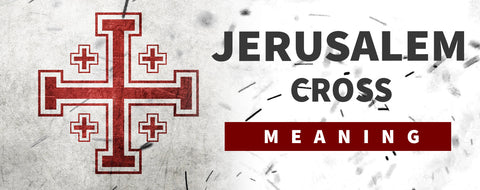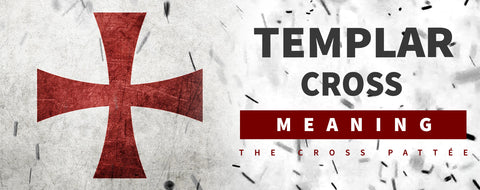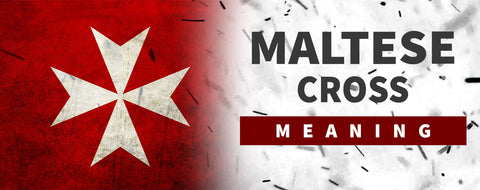
The Solomon's Temple : First Temple of Jerusalem
of reading - words
The Solomon's Temple was built 10th century B.C. In this blog article, we will try to learn more about the origins of man according to the holy bible but especially about the history of Jerusalem and the Temple of Solomon. Why was this Temple created ? Why did they create a second temple ? Why Jerusalem was so unstable ? In any case, we are going to try to understand more deeply the incredible history of the Solomon's Temple.
1) History of King Solomon's Temple
Origins of man according to the Holy Bible :
For those who do not know, the first 5 books of the Old Testament Bible for Christians and the Judaic Bible (Pentateuch for Christians or Torah for Jews) are common to both religions. It should be noted that Islam also recognizes the Torah or Pentateuch but claims that some passages of these writings were falsified by the Jews. Islam also partially recognizes some other books of the Old Testament of the Bible (Christian and Judaic). For Christians all the books of the Old Testament written in Hebrew are only one part of their Bible, the other being the New Testament written after Christ's coming on earth. For the Jews the books written in Hebrew are the only books that make up their Bible, they do not recognize the writings of the New Testament since they never recognized Jesus Christ as the Messiah, but rather as an impostor and a public agitator. Still it should be stressed that only the first 5 books composing the Torah or the Pentateuch are identical, for the other books of the Old Testament there are differences in translation between the Christian Bible and the Judaic Bible. So according to these writings:
- Adam was born in 4000 BC.
- Shem was born in 2448 BC.
- Abraham was born in 1998 BC.

It is important to know that the 3 religions (Jewish, Christian, Muslim) consider Abraham as their founding father Abraham met Melchisedech on his return from a victorious campaign according to some commentators of the Torah, Melchisedech is Shem king of Salem, the father of the Semites, son of Noah. Indeed, Shem being credited with a life of 610 years, he was thus able to meet Abraham. Although God had promised Abraham more descendants than the stars of Heaven, the first child of this lineage was not yet born, and Abraham and his wife were getting older. To get around the problem and to 'help' God to fulfill his promise, Sarah, Abraham's wife, pushed her husband into the arms of his servant Hagar. She gave Abraham a son : Ishmael, whose name means "God has heard.” This birth, although orchestrated by Sarah, provoked in her a tenacious jealousy which threatened the life of the servant and that of her son.
Ishmael was forced to flee into the desert with his mother. But the angel of the Lord commanded Hagar and her son to return to Abraham. Some time later Sarah and Abraham had a child: Isaac, whose name means "God has laughed.” To make Isaac the one and only heir of Abraham, Sarah drove Ishmael and his mother out into the desert for good. The only legitimate son of the promise of the covenant according to the Bible is therefore Isaac. However, Ishmael also had a promise of descendants, but unlike Isaac, this divine promise was only made after the birth of the child (Genesis chapter 16, verses 10-11). The Hebrews consider themselves the son of a free woman and not of a servant girl, so it is Isaac whom they consider their ancestor and the depositary of the promise of the covenant. Finally, from Isaac's lineage will be born the Jewish nation, and from Ishmael's lineage will be born the Arab nation.
2) Jerusalem, Jewish City from 1200 BC to AD 70
A. Chronology of the Kings of Israel (before Christ)
Unified Monarchy (before Christ)
From 1200 to 1050 B.C., the Jewish tribes organized themselves into tribes.
- Tribes of Reuben founded by Reuben .
- Tribe of Simeon founded by Simeon .
- Tribe of Levi founded by Levi. It is strictly dedicated to the service of the Temple of Jerusalem. It has no region in the land of Israel. It has only cities scattered throughout the territory.
- Tribe of Judah founded by Judah (dynasty of King David) .
- Tribes of Issachar founded by Issachar .
- Tribes of Zebulun founded by Zebulun .
- Tribe of Dan founded by Dan .
- The tribe of Naphtali founded by Naphtali .
- Tribes of Gad founded by Gad .
- Tribes of Asher founded by Asher .
- Tribes of Joseph founded by Joseph . Tribe of Manasseh founded by Joseph, father of Manasseh . Tribe of Ephraim founded by Joseph the father of Ephraim .
- The tribe of Benjamin, which Benjamin founded.
12 bis. Tribes of Israel and the tribe of Judah.

From 1050 to 1010 Saul (born in 1096 BC) will unify (not without difficulty), the tribes to find the kingdom and will be the first king of Israel chosen by the prophet Samuel. On the wise advice of the prophet Samuel, he imposes the creation of a unique sanctuary, which will result in the installation of the Ark of the Covenant in Jerusalem. This founding act will make 'Yahweh' the only god of the Jews.
From 1010 to 0970 David (born in 1056 BC) will be the second king of Israel chosen by the prophet Samuel, who is presented in the biblical account, along with his son Solomon, as one of the two founders of the ancient Israelite state.
From 0970 to 0931 Solomon (born in 1016 BC) will be the third king of Israel (Hebrew, שְׁלֹמֹה, Helomo, i.e., wise) is one of the sons of King David, his mother is Bathsheba, he succeeds his father.
B. Scission of the kingdom (before Jesus Christ)
After the death of Solomon, the northern tribes rebelled under the reign of his son Rehoboam in 931 BC.
Rehoboam, son of Solomon, provoked the schism that divided the kingdom of Israel into two rival kingdoms, he was king of Judah for 17 years.
Jeroboam son of Nebat of the tribe of Ephraim, the second protagonist of the schism, is the founder of the northern kingdom of Israel and the first king of Israel from 931 BC to 910 BC.
The two nations, Israel in the north and Judah in the south, disunited and often fought against each other. In the kingdom of Judah, the dynasty of David continued until the Babylonians invaded the country (597 and 586 BC), but in Israel many kings and dynasties succeeded one another. The period of divided monarchy was marked by constant threats from the Assyrians, Aramaic and Babylonians. Israel and its capital Samaria fell before the Assyrian army in 722-721 B.C., the people were deported and foreigners settled in their place. Judah suffered two humiliations under the Babylonian yoke: the surrender of Jerusalem in 597 BC and its destruction in 586 BC. Captives were taken to Babylon twice, but since no foreigners came to settle in the kingdom of Judah and since the captives enjoyed a certain freedom at least the freedom to associate with each other the life of the people continued both in Babylon and in their homeland. Exile was a misfortune which the prophets had long foretold as a divine punishment. This experience led the Israelites to examine their consciences as a people and then to write down their ancient traditions.
Kings of the Kingdom of Judah
- 931 - 913 Roboam
- 913 - 911 Abiyyam
- 911 - 870 Asa
- 870 - 848 Josaphat
- 848 - 841 Joram
- 841 - 841 Ochozias
- 841 - 835 Athalie
- 835 - 796 Joas
- 796 - 781 Amasias
- 781 - 740 Ozias
- 740 - 736 Yotam
- 736 - 716 Achaz
- 716 - 687 Hezekiah
- 687 - 642 Manasssé
- 642 - 640 Amos
- 640 - 609 Josias
- 609 - 609 Joachaz
- 609 - 597 Joaiqim
- 598 - 597 Joiakîn
- 597 - 587 Sédécias
- 586 : Capture of Jerusalem by the neo-Babylonian king Nebuchadnezzar.
Kings of the Kingdom of Israel
- 931 - 910 Jeroboam
- 910 - 909 Nadab
- 909 - 886 Basha
- 886 - 886 Ela-Zimri
- 885 - 874 Omri
- 874 - 853 Ahab
- 852 - 841 Joram
- 841 - 814 Jéhu
- 814 - 798 Joachaz
- 798 - 783 Joas
- 783 - 743 Jeroboam II
- 743 - 743 Zacharie-Shallm
- 743 - 738 Menahem
- 738 - 737 Peqahya
- 737 - 732 Pekah
- 732 - 724 Osée
- 722 : The Assyrians take the kingdom of Israel.
Kingdom of Israel and Kingdom of Judah in 931 BC.

3) The Solomon's Temple construction
A. Construction of the First Temple in Jerusalem
Geographically, the Temple of the Hebrews or Temple of Solomon was located in the center of the Temple Mount (now called the Esplanade of the Mosques). This Temple of Solomon (in Hebrew: מקדש שלמה mikdash Shlomo), known as the first Temple erected in Jerusalem is according to the Bible (I Kings 6-8 & II Chronicles 3-5), a place of worship built by King Solomon on Mount Moriah in 970 BC. Conceived by King Solomon to centralize the worship of the God of Israel, Jehovah (or Yahweh) it was put into service in 953 BC, its hegemony was challenged after the death of King Solomon by the creation of another sanctuary at Bethel, in the schismatic kingdom of Israel. This first temple was destroyed during the siege of Jerusalem by the Babylonian army of Nebuchadnezzar II in 587 BC.

B. Construction of the Second Temple in Jerusalem
The first temple was destroyed in 587 BC, it was rebuilt on the same site as the first, this second temple was completed around 516 BC. The rebuilding of the second temple began after the captivity of the Judeans in Babylon, during the Persian period under Zerubbabel, grandson of Joaquin, appointed governor of Judea, and the high priest Joshua. The pilgrims, numbering 43,000 including children, have just ended a deep and trying expedition of four months from the shores of the Euphrates to Jerusalem. The religious fervor that drives them to command them to restore the place of worship, rebuilding the Temple of Solomon destroyed and reintroducing the ritual of sacrifices. At the instigation of Zerubbabel, who personally sheds 1000 gold dariques (among other gifts), the people promptly offer gifts to fill the sacred treasure. They erected the altar of God in its former precise location, and cleared the site of the First Temple of its debris. In the second month of the second year (535 BC), the foundations of the Second Temple of Solomon are laid, in great manifestations of joy (according to Psalm 116 117 118). This movement was followed with great interest by the non-exile population of Judea (Zechariah 4:10). In the meantime, the Persian government recalls Zerubbabel, its governor, whose Davidic ancestry raised considerable messianic hopes. The Samaritans offered their cooperation in the reconstruction project, but were formally refused by Zerubbabel Joshua and the elderly, who believed that Judea should rebuild its Temple without help.

Perhaps it was also necessary to protect the secrets of the construction of the temple of Solomon ! Malicious rumors against the Jews spread immediately. The Samaritans took umbrage at this refusal and took revenge by sending messages to Ecbatane and Susa, which had the effect of suspending the work. Seven years after these events, Cyrus the Great, who had ordered the reconstruction of the Temple of Solomon, died (2 Chronicles 36: 22-23). His son Cambyse II succeeded him. At the death of the latter, the "false Smerdis", an impostor usurped the throne for seven months, before being removed by Darius I (enthroned in 522 BC). During the second year of the monarch's reign, the reconstruction of the Temple was resumed and completed under the guidance of the prophet Zechariah. The Temple was ready to be consecrated in the spring of 516 B.C., more than twenty years after the return from Babylonian captivity. It was much later restored and enlarged under Herod I the Great, beginning in the year 20 BC. Because of its restoration by Herod, it is sometimes called "Temple of Herod.” Throughout the period until its destruction, the Second Temple became the cultural and spiritual center of Judaism and the place of ritual sacrifices, the korbanot. It was destroyed in AD 70 by the Romans at the end of the first Jewish-Roman war. In 70 CE, Titus, a Roman general and son of the Emperor Vespasian, took Jerusalem and ordered his soldiers to massacre the entire population of the city and burn the Temple. He ordered that nothing remained of the Temple or the city, except for a few towers on the ramparts and the western wall of the city to serve as a garrison for the Xth Legion, the sinister Fretensis. His order was carried out. Only the enormous stones of the retaining wall of the Temple esplanade remained.
4) Jerusalem : Capital of Israel
A. Jerusalem, open city from 71 to AD 335.
During this period the city was populated mainly by Jews and Christians who accepted the domination of Rome. The population will pay a heavy price to Rome, which in return will let them trade and practice their religions, defending them from the invaders. In the year 71, the Jews were no longer allowed to reside in Jerusalem, but in spite of this prohibition, a Jewish community resettled in the city. Around 130, Emperor Hadrian decided to rebuild the city, probably to restore it to its former splendor and to promote the Hellenized Jewish elites who still lived in the city. Temples were built on the sites that would be identified as those of the Holy Sepulcher and the Nativity in Bethlehem. Two relatives of Patriarch Judah Hanassi , who had good relations with the Severans, were among the leaders of the Jewish community in Jerusalem. The collapse of the Roman Empire coincided with the rise of Christianity. In the 4th century Constantine's mother, Helen, visited Jerusalem from 325 to 327 and identified the holy places. In 324, Konstantin on September 13, 335, according to the liturgy of Jerusalem, the dedication of the basilica of the Holy Sepulcher is celebrated.

B. Jerusalem Christian City from 335 to AD 614
In 451, the patriarchate of Jerusalem was created. The city Ήὰγία πόλις Ίερουσα[λήμ] (Hagiapolis Ierusalem, Holy City) or Hierusalem , is represented on several Christian mosaics from the 5th to the 8th century, in particular on the Map of Madaba (560-565). When Jerusalem became a Christian city, the site of the Temple itself was a huge field of ruins. It is on this devastated site that the Christians built with the agreement of Justinian, between 531 and 543, on the edge of the esplanade at the exact location of the former palace of King Solomon, a church called "Sainte-Marie-la-Neuve,” commemorating the presentation of Jesus to the Temple, according to chroniclers (Antoine de Plaisance, Cyril of Scythopolis, Gregory of Tours) this church was destroyed by the Persians during the siege of Jerusalem in 614.
C. Jerusalem Muslim City from 638 to AD 1099.
The Persians of the 'Mazdeist' religion occupied Jerusalem from 614 to 638, but were unable to stem the Muslim tidal wave in 638. Having become masters of Jerusalem in 638, the Muslims built the Dome of the Rock (Qubbat As Sakhra) on the site of the Temple of Solomon between 688 and 692. According to Muslim tradition, during his night journey, Mohammed would have risen to the heavens from the rock covered by this monument. In 692, the Muslims destroyed the church "Sainte-Marie-la-Neuve". In 693 the Muslims began the construction of the al-aqsa mosque on the site of this church, a mosque inaugurated in 705. In 1073 the Seljuk Turks took control of the city after their victory over the Fatimids. For the next two decades, unlike their predecessors, the Seljuks refused the passage of Christian pilgrims to Jerusalem, which triggered the first crusade, decided by Pope Urban II in 1095. As the Crusaders progressed towards Jerusalem, the Fatimids succeeded in retaking the city in 1098.
D. Jerusalem Christian City from 1099 to A.D. 1187
After the Crusaders took Jerusalem in 1099, the dome of the rock was transformed into a Christian church. It is then surmounted by a cross, decorated inside with pious images, but the Arabic inscriptions (then indecipherable) were left on it, denying the divinity of Jesus. It was also at this time that the path that Jesus would have followed to climb Calvary, the Via Dolorosa, was recognized. The palace and the royal buildings are established around the Tower of David and the present Armenian quarter. It became the Templum Domini or Temple of the Lord and was entrusted to the canons (priests living in the community) of the Holy Sepulcher. The city became the capital of the Latin Kingdom of Jerusalem, also called the Frankish Kingdom of Jerusalem and Godfrey of Bouillon took the title of Confessor of the Holy Sepulcher. Muslims and Jews were forbidden to settle in Jerusalem as long as the Crusaders' domination of the city lasted.
The Franks enlarges and considerably transform the Holy Sepulcher. The foundations of the Al-aqsa Mosque and the Dome of the Rock, which had once again become places of Christian worship, were methodically excavated from 1106 to 1116 by the nine knights who created the Order of the Knights Templar in 1118. These nine knights lived in the stables of King Solomon next to the Al-aqsa mosque, while King Baudouin lived in the Al-aqsa mosque (on the site of King Solomon's palace, which was razed to the ground by the Romans and rebuilt by the Christians as the church of "Sainte-Marie-la-Neuve"), during these excavations, the Muslims discovered writings concerning the life of Jesus, likely to destabilize them, but St. Bernard took things in hand and commissioned Etienne Harding to translate these parchments and add certain parts to the New Testament 'revised and corrected.” The origin of the name "Templars" therefore does not refer to the place they occupied in 1106, but to the place where the two Temples of the Hebrews stood, and then the Templum Domini (the dome of the rock transformed into a place of Christian worship) considered to be their symbolic seat. As proof, this edifice appeared on the back of the seal of the Grand Masters of the Order of the Knights Templar. Jerusalem being depopulated after the massacres or exile of the Muslims and Jews, the king of Jerusalem called upon Syrian Christian colonists around 1115 to repopulate and defend it. Pilgrimages brought new prosperity to Jerusalem in the middle of the 12th century and justified the construction and expansion of several hospitals, including that of the Hospitaller Order of Saint John of Jerusalem.

In 1177, when the walls collapsed, major refortification work was undertaken.
In 1187, after the attack by Renaud de Châtillon despite a truce between Saladin and the kingdom of Jerusalem, Saladin attacked the Crusaders, captured Châtillon at the battle of Hattin (4 July 1187) and had him beheaded. During this battle he also captured King Guy de Lusignan, laid siege to Jerusalem on 20 September 1187 and finally seized the city on 2 October 1187. He quickly retook all the Crusader cities, with the exception of Tyre.
E. Jerusalem Muslim City from 1187 to AD 1917.
- An unstable period : from the reign of Saladin to the control of Jerusalem by the Mamelukes (1187 - 1261)
- The reign of the Mamelukes (1261 - 1516)
- Ottoman period (1516 - 1917)
F. Jerusalem / British Mandate 1917 - AD 1948
After the Battle of Jerusalem (November-December 1917), where both sides chose to operate away from the city for the sake of the holy places, British General Edmund Allenby solemnly entered Jerusalem on December 11, 1917, on foot. He is flanked closely by the French High Commissioner for Palestine Georges Picot. He read a proclamation in English guaranteeing religious tolerance and protection in all the Holy Places. This proclamation was then read in French, Italian, Hebrew, Arabic, Greek, Russian and Armenian, which was the first official use of Hebrew in the Land of Israel since the fall of the Second Temple. The city remained under the British mandate until 1948, in a climate of instability (terrorist attacks, violence). From 1918 onwards, Jewish quarters were created west and south of the Old City, and the number of Jewish refugees from Central Europe increased. This increased Jewish settlement provoked Arab reactions, which broke out in Jerusalem in 1920 and 1928. British High Commissioner Herbert Samuel put a stop to Jewish immigration. In 1933, with the rise of Nazism, the British began to move towards a division of the country, with Jerusalem to be on the border line as an open city. In the aftermath of the Second World War, the United Kingdom wanted to limit the entry into Palestine of the many Jewish survivors of the Hitlerite camps, especially as Arab demands were becoming increasingly strong. Opposition to the British government quickly grew, both on the Jewish and Arab sides. On 22 July 1946, the Irgun, an underground Jewish organization, blew up a wing of the King David Hotel, the headquarters of the British administration. Fighting in Jerusalem between Jews and Arabs begins in November 1947.
I. Jerusalem partitioned from 1948 to AD 2018.
On the afternoon of May 14, 1948, David Ben Gurion proclaimed the independence of the State of Israel. On May 15, 1948, the British left the region, leaving Jews and Arabs to tear each other apart for possession of the city. On May 27th , the Arab Legion forced the Israelis to evacuate the Old City. On June 6, the Israelis manage to link the city to the rest of the country. In July, the Arab air force bombed the city. On 7 January 1949, the United Nations Security Council imposes an end to the fighting. The fighting took place in the Old City finally abandoned by the Israelis and on the outskirts of the city (Massacre of the convoy for the Mount Scopus Hospital, "Burma Road"). From November 1948 and the establishment of the cease-fire line materialized by no man's land, the city was divided between a western part controlled by Israel and an eastern part (which includes all the Old City) controlled by Jordan. Movement between the two parts is impossible. Only UN personnel and foreign tourists can pass through the Mandelbaum Gate checkpoint. Most of the holy places, as well as the Jewish quarter of the Old City (emptied of its inhabitants), are then under Jordanian control. All the synagogues and many churches in the Old City were ransacked, as well as the Mount of Olives cemetery (whose tombstones were used to build latrines). While Arab Jerusalem is neglected by the political authorities, Israeli Jerusalem benefits from important investments : it is proclaimed capital of the State of Israel for the first time in nearly two thousand years except for the Crusader period, the Holy City becomes a political capital again and the Knesset and most of the ministries move there. The population of Israeli Jerusalem increases from 90,000 to 190,000 between 1949 and 1967. The government quarter is built in the 1950s and 1960s and the Israel Museum with the prestigious Dead Sea Scrolls is inaugurated in 1965.

The Hebrew University of Jerusalem reopened in Givat Ram in 1953 and the New Hadassah Hospital moved to Ein Kerem in 1961. A political, demographic, economic and cultural divide separated the two parts of the city on the eve of the Six-Day War. On 5 June 1967, after the Israeli preemptive strike that destroyed the Egyptian air force on the ground, King Hussein of Jordan ordered his artillery to open fire on Israeli positions in Jerusalem and the Jordanian infantry entered no-man's-land and seized the United Nations headquarters. On 6 June, the Israeli army began a movement around the Old City and made the junction with the Mount Scopus enclave. On 7 June at one o'clock in the morning, Jerusalem time, the Security Council voted a request for an immediate cease-fire but Uzi Narkiss' troops quickly and without fighting occupied the Old City and reached the Wailing Wall. On 11 June, after the evacuation of the Maghreb District, the clearing of the Kotel esplanade began. On June 14, 250,000 Israelis celebrate Chavouot (Jewish Pentecost).
On 28 June, the Arab municipality was dissolved, but it was not until 30 July 1980 that the city was formally fully unified and became the capital of Israel, even though the United Nations General Assembly had voted on 4 July 1967 to declare the annexation of Jerusalem null and void. As a result of the Six-Day War, Israel controls the whole of Jerusalem. Jews are allowed to return to their holy places with the exception of the Temple Mount, where they are forbidden to pray, although neither Christians nor Muslims have access to their holy places. Access to the Esplanade of the Mosques is sometimes made more difficult for Muslims in times of tension. Moreover, Israel is taking responsibility for the restoration of many places of worship, reduced to a state of disrepair under the Jordanian occupation. Israel proclaimed Jerusalem "eternal and indivisible capital of the State of Israel" and annexed additional territories within the limits of the State of Israel and the municipality of Jerusalem in 1982 and 1993. The United Nations Security Council, in its resolutions 476 and 478, declares that the Israeli law establishing Jerusalem as the "eternal and indivisible" capital is null and void and is a violation of international law. The resolution calls on Member States to withdraw their diplomatic missions from the city, and until 2017 no embassy is established in Jerusalem. In 2018, the United States will transfer its embassy to Jerusalem and other countries will follow suit.
5) A bit of history to understand Jerusalem
A. Jerusalem in 1949

B. Israel and the West Bank in 2010
Following the blockade of the Strait of Tiran to Israeli ships by Egypt on 23 May 1967 (and when the Israelis had previously announced that they would consider this act as a casus belli). Israel attacked Egypt, Jordan and Syria. On the nightfall of the first day of the conflict, half of the Arab air force was devastated, on the sundown of the sixth day, the Jordanian, Syrian and Egyptian battalions were overcome. The tanks of the Israeli army jostled their opponents on all fronts. In less than a week, the Hebrew State tripled its territorial hold : Egypt lost the Gaza Strip and the Sinai Peninsula, Syria was cut off from the Golan Heights and Jordan from the West Bank and East Jerusalem. Israel has since considered this reunified city as its capital.
C. Enigma concerning the Temple of Solomon
To build this temple, the Jews were inspired by Egyptian construction methods, be it for the transport and placement of stone blocks weighing several tons (lever systems) or to lower monolithic ceilings supported by posts (posts designed to slide in hollow stone cylinders filled with sand, functioning as jacks) or to automatically block vertical entrances by monoliths weighing several tons (with a sand box system). Therefore, it may well be that the hall of the Most Holy was equipped with 2 superimposed ceilings, the under-ceiling resting on columns themselves resting on sand contained in hollow stone cylinders acting as jacks, all out of sight in the cellar. In case of absolute danger, the furniture located in the saint and they could be lowered into the cellar located under the holiest, then, it would have been enough to release the sand from the jacks simultaneously (which would have flowed into a cavity provided for this purpose and located under the cellar). Once the ceiling had become a floor, it was impossible to move this monolith of several tens of tons and no one could imagine its function.
In the year 587 B.C. when Nebuchadnezzar II first destroyed the temple, Nebuchadnezzar II searched for the treasure but found nothing !
The second Temple rebuilt in the same place was completed around 516 BC. It should be noted that the Jews refused all help, including that of the Samaritans for this reconstruction : perhaps the methods of construction had to remain secret !
In the year A.D. 70, the Second Temple was destroyed by the Romans, and this time again the Romans searched for the treasure but found nothing !
In the year 692 the Muslims (the new masters of the place) built the Dome of the Rock on the site of the Temple of Solomon, which had remained a field of ruins for 7 centuries.
In the year 1106 following the conquest of Jerusalem by the Crusaders, and after years of questioning with the natives, 2 knights (Hugues des Payns and Geoffroy de Saint-Omer) helped by some anonymous crusaders, decided to undertake excavations in the basement of the Dome of the Rock and the El Aqsa Mosque, these excavations conducted in the greatest secrecy will last more than 9 years ! Once the excavations were completed, these two Knights founded the Order of the Knights Templar and the Templars became the gendarmes of the Latin States. Even today, the question still arises as to what these knights discovered, their modern heirs may know the answer.







Anil Uner Erden
very interesting history and Christians are always My Brothers and My Sisters.